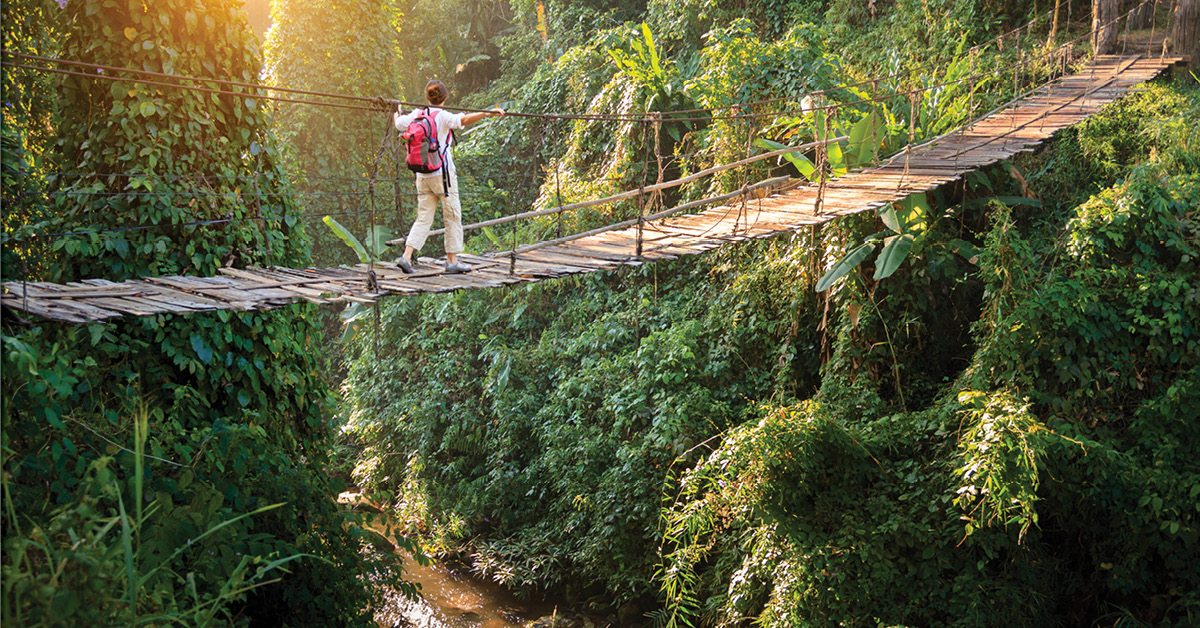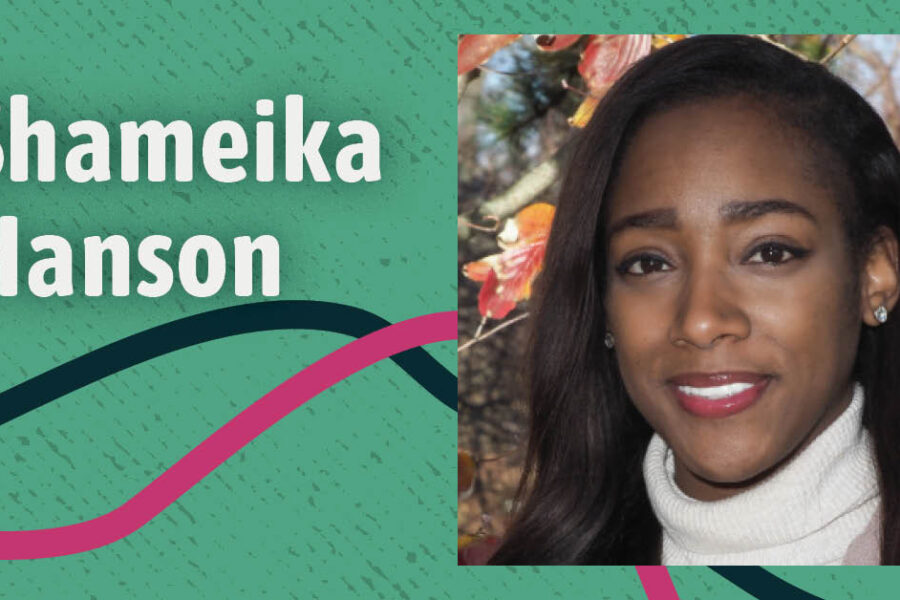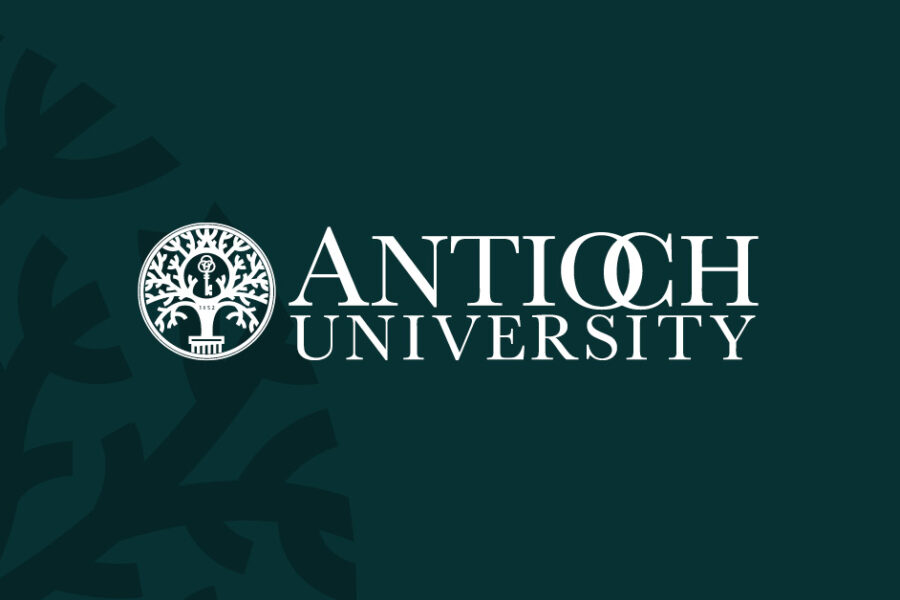In the 1980s, a new kind of travel was marketed to people in the global North—ecotourism. In the following decades, it’s grown into a $270 billion industry. Instead of staying in hotels and urban meccas, affluent travelers are now beckoned to the last places in nature still stewarded by indigenous people. One of the supposed foundations of ecotourism is that it supports the conservation of these precious spaces, but two alums of the Graduate School of Leadership and Change, Dr. Amy Lethbridge and Dr. Kelly L. Cerialo have dedicated their work to showing that’s not always the case—and how that could change.
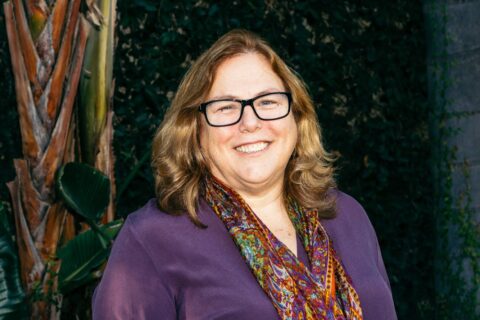
Both Cerialo and Lethbridge are concerned with tourism as a developmental tool. Who is exploited? Who is in control? How can this be assessed? How can all voices be heard? Lethbridge looked at an indigenous community in Panama—the village of Embera Drua—and saw a local population without the tools to defend itself against external interests. Cerialo studied the social impacts of tourism in the UNESCO Champlain Adirondack Biosphere Reserve in New York, and attempted to map the dynamic web of competing stakeholders that comprise the tourist system—a system that can drown out the voices of locals.
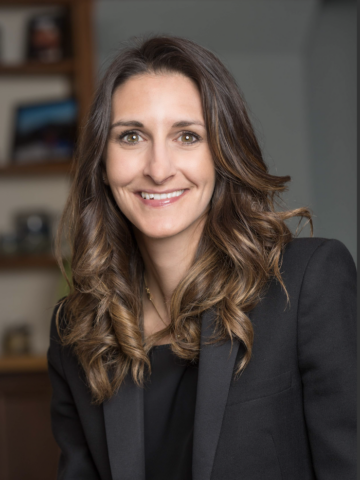
They both found that when tourism comes to an area, especially if the area lacks economic development, it’s often the underprivileged indigenous populations that are silenced. This exclusion is exploitative, and can transform the area into a place where nobody lives, a resort. Both alums agree a better way is possible, and are articulating a path toward justice.
The Challenge of Sustainable Ecotourism
Lethbridge and Cerialo can clearly envision how sustainable tourism should work. “In the best case scenario, you allow all the voices to come to the table, and they’ll start to talk,” says Cerialo. The major voices in tourism are usually economic development, and cultural heritage and conservation organizations. Ideally, they’d work together with the local community, who would also have a voice. For this to happen, the community needs to accrue knowledge, expertise, and resources to engage fairly with the larger voices.
“The community should have some control over every project,” says Lethbridge. However, this can be extremely challenging, especially when businesses that have the most money to invest dominate the conversation. The transformation of a place into a pure resort for wealthy visitors to enjoy is an appealing model for these investors, they don’t have to deal with local populations and can streamline services. The resort model is also a form of neo-colonialism and leads to the slow genocide of indigenous populations in desirable areas.
This is neither just nor sustainable. But it’s also not inevitable. The opening premise of Cerialo’s dissertation is that it’s possible for tourism to protect the cultural and ecological integrity of a region. Tourism can bring wealth to the locals and promote environmental conservation. Lethbridge proposes the same ideal, and emphasizes that indigenous communities, in order to best represent themselves in tourism, must be given modern capacity—the knowledge for how to deal with complex modern organizations.
What gets “messy,” as Cerialo puts it, is the balancing of the many interests that make up tourism, such as conservation organizations and business owners. “The approach with all these different organizations is piecemeal,” says Cerialo. “No one is managing it as a whole system.” Development becomes skewed toward particular interests. This can result in a narrative of conflict between the parties that inhibits communication and the potential for real solutions.
Lethbridge experienced tourism’s conflict narratives working for The Mountains Recreation and Conservation Authority, a parks agency that oversees the mountains and watersheds around the Los Angeles area. Government agencies want a lot of meetings. “It gets to a certain point where the community says, ‘I don’t want to go to another meeting with you. I’m not seeing any change,’” Lethbridge explains. Frustration builds, imbalance increases and the community can lose trust. If people in the community have the tools that businesses and organizations have they can better advocate for themselves and their land.
Ecotourism in the Field
Canoeing down the rocky Chagres river, Lethbridge spent two years visiting the Panamanian village of Embera Drua. Her process was narrative—she wanted to tell the story of Embera Drua and tourism through the lens of the villagers themselves. For three to six weeks at a time she lived in the village and observed talks with developers. She saw how cultural differences hindered the villagers in taking control of tourism projects. This showed a need for education, training, and external support in capacity building. And she knew it was possible.
“There are some really cool models of NGOs and local communities working together,” she says. “Over time, the project becomes governed by the local people, but there’s a period with training and support.” This model of support is important because otherwise, people who have never been tourists themselves are asked to lead successful projects without personal experience. Creating a support system for indigenous communities to manage tourism is one-way ecotourism could be equitable.
Cerialo also took on the role of an observer in the Champlain-Adirondack Biosphere Reserve, on the border of New York and Vermont. The biosphere is comprised of Lake Champlain and the lush Adirondack and Green Mountains. Cerialo began by doing focus groups with business owners, community members, and people she thought were unaffected by tourism. She quickly discovered this was unrealistic. “Anyone living in a community that’s so tourism-dependent is related to tourism in some way,” she says.
She found that the system was tipped toward business interests and external investment. “Tourists started coming. Eventually they bought second homes, and were literally driving locals out,” She says. “That’s a common narrative. This is where the divide happens.” Without housing, there aren’t enough people to provide labor to support year-round tourism. This is how economic improvement can look good on paper, but produce an unsustainable result. These unstable results are unique to individual places, but Cerialo has developed a conceptual framework that looks at the strengths of different stakeholders and how to balance power. The next phase of her research will apply the framework in Italian and South African biosphere reserves.
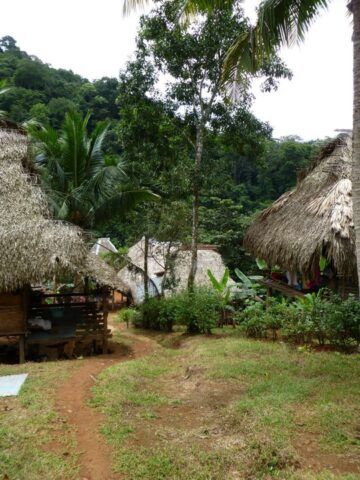
The Difficulty of Observation
Cerialo originally wanted to do her project on ecotourism in South Africa. Her advisor, Lize Booysen, chair at the GSLC asked her to consider the perspective and privilege she would bring to her position. Cerialo recalls Booysen advising, “It’s going to absolutely affect your research. You can do that. But are you ready?”
This thoughtful lens on power in research led Cerialo to a new path. She wanted less of a barrier between herself and the data, so she chose the Adirondack biosphere since she lives in New York. “I’m so glad I did because there were so many culturally sensitive things that I wasn’t even aware of in my own community,” she says. “Thanks to Lize,” says Cerialo, “as I did the research, my eyes were opened to the white lens, the Western lens, when talking about tourism.”
In their research work, both Cerialo and Lethbridge remember how difficult it was to maintain their observer role. They had to stop themselves from trying to help or giving advice. In the village of Embera Drua, Lethbridge would uncomfortably sit through meetings where she could see exploitation happening.
“They get ripped off by the tour companies like crazy,” says Lethbridge. “It was hard not to jump in.” Cerialo agrees, “It was so hard to just listen and not try to direct them in the right way.” Lethbridge, like Cerialo, benefited from the social justice perspectives of Antioch faculty—she specifically remembers Carolyn Kenny, a GSLC faculty and expert in Indigenous Studies. “She really helped me figure out the cultural nuances,” says Lethbridge.

Lessons for Future Work
After her dissertation in 2016, Lethbridge went on to apply the data and lessons of capacity building to her work at the Mountains Recreation and Conservation Authority and is now Chief of Staff. “We’re doing a lot of work in making sure underserved and underrepresented communities enjoy the parks and have representation in our workforce.” Much of what she learned in her dissertation, Embera Drua: The Impact of Tourism on Indigenous Village Life in Panama, helps her understand methods to include community in decision making.
In the wake of her recent dissertation, The Social Impacts of Tourism in the UNESCO Champlain Adirondack Biosphere Reserve (USA), Cerialo has been asked to give several talks about sustainable ecotourism, UNESCO biospheres, and the impact of COVID-19 on tourism. She’s also working on two articles related to her dissertation research. “The focus of my research right now is on the social impacts of tourism in UNESCO Biosphere Reserves,” she says, “but I’m open to expanding outside of this to protected areas in general.”
Meanwhile, the vast machine of tourism whirs on. Basic inequity repeats itself. As Lethbridge says, “People are people and money is power,” Lethbridge says.“All of those dynamics are exactly the same.” With so much at stake, it becomes vital, as these alums have done, to define a sustainable tourism. And to imagine how tourism might include local communities equitably while acting as a tool for real improvement. Their research and work continue to articulate the shape this might take—so that it can come into being.

